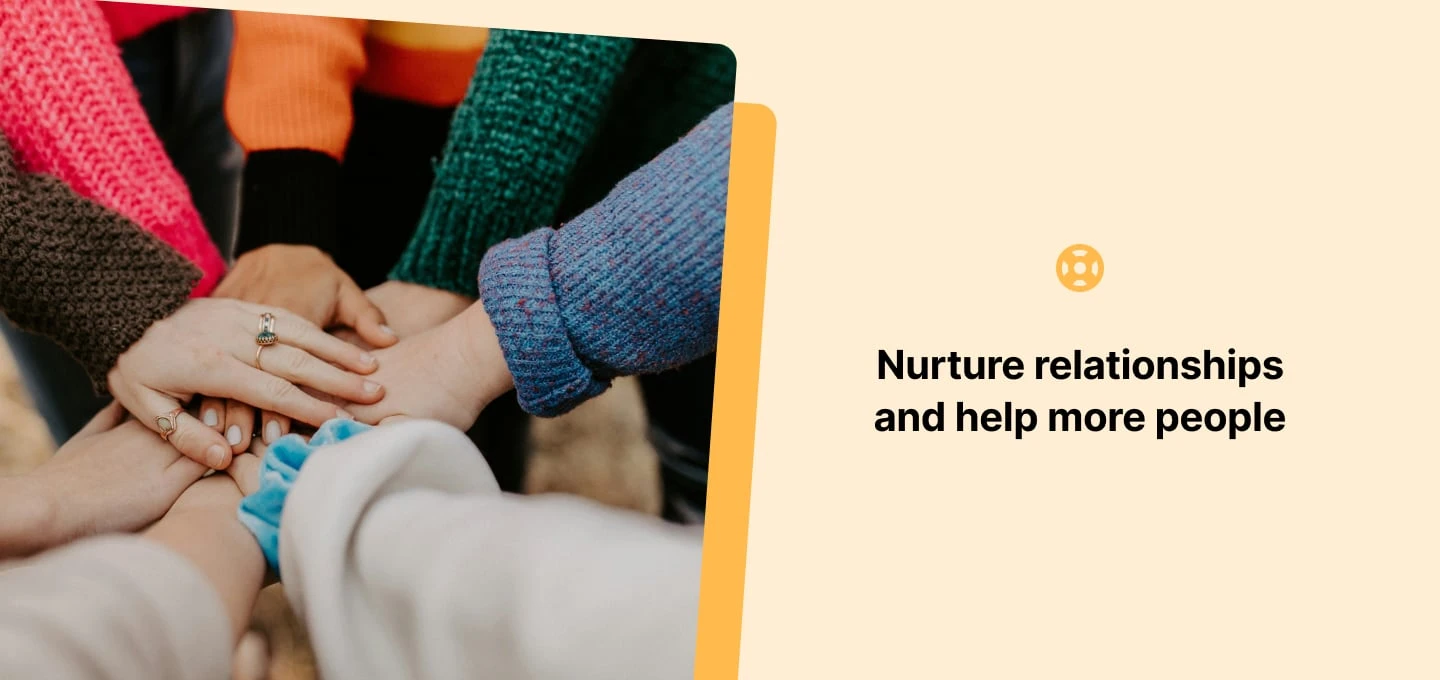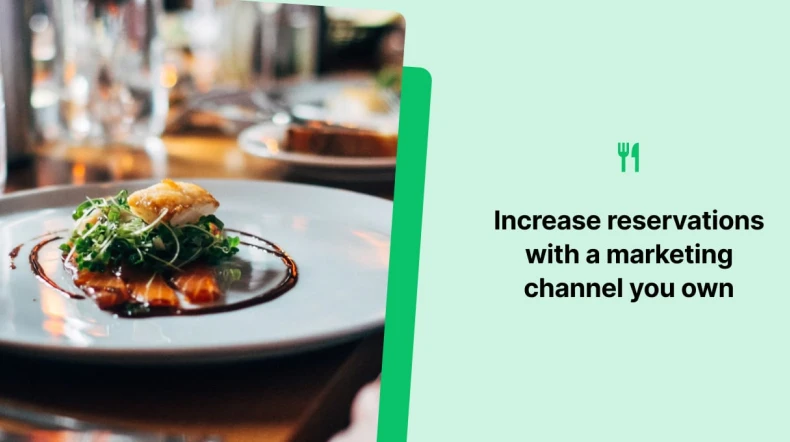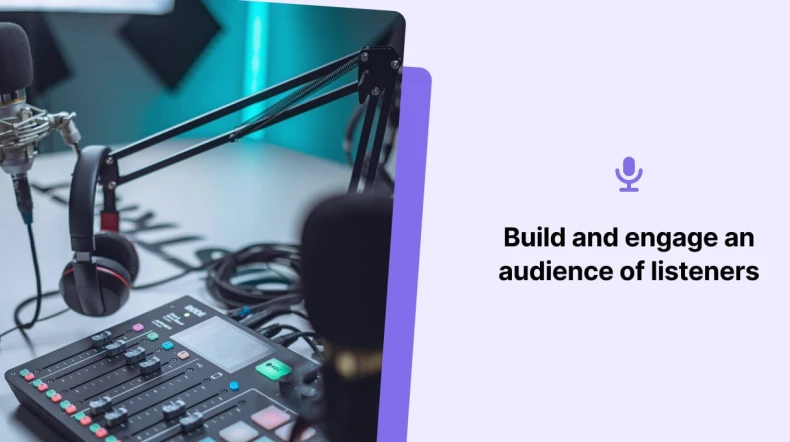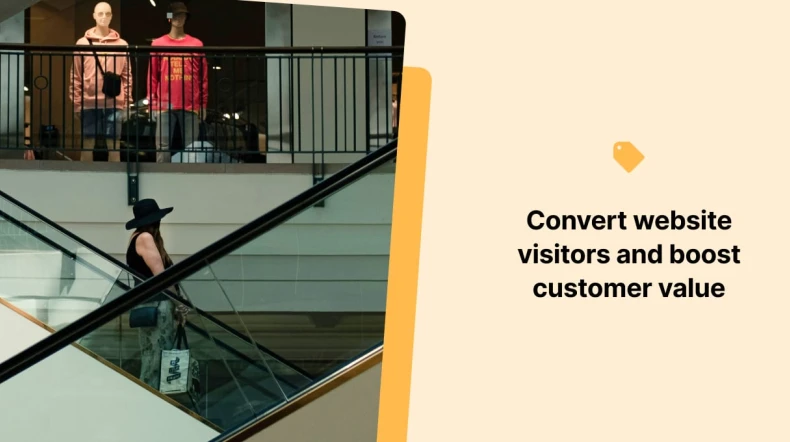How 2 nonprofit email marketing experts boost engagement and raise funds with email

Nonprofits have ambitious missions that usually have little to do with making money. But to achieve their goals, they must generate financial support. This requires effective marketing, and email is one of the best channels.
To help you create an effective strategy for your organization, we enlisted 2 nonprofit email marketing experts to share all their secrets!
We spoke to:
Meda Šermukšnė, co-founder of Augalyn, a nonprofit promoting plant-based living
Katelyn Baughan, a nonprofit email consultant who has run campaigns for Amnesty International, National Geographic and more
Together, they shared all you need to know about nonprofit email marketing, including how it helps and plenty of effective strategies.
First up: Why should nonprofits use email marketing?
Email marketing helps nonprofits in many ways. Here’s how the organizations Meda and Katelyn work with benefit from email marketing.
Email drives revenue
Email marketing is a great driver of revenue and donations. Katelyn said that email was the “number one channel” for raising funds in her work with nonprofits.
Email is especially great at revenue retention. This is important because it’s much cheaper to retain a donor than acquire a new one.
Katelyn highlighted that ”while the donation rate for one-time donors is high at 21%, for two-time donors it doubles to 45%.”
Email is perfect for getting those repeat donations since it lets you directly communicate with people who have already donated at a low cost.
Email reduces dependence on algorithms
Many nonprofits use social media to spread their message. But relying on social media means that followers don’t always see your content.
“With social media, we’re always at the mercy of algorithms,” explained Meda. “We have little control over who sees our content. The chances of missing the audience we want to engage with is high.”
Email marketing removes this uncertainty: When Meda sends an email, it’s almost certain to reach the people who have actively chosen to hear from her organization.
If they’re on our list, they are going to get the message. This is so much more reliable.
The final benefit of email compared to social media is that while these platforms have lots of users, email has even more!
A higher number of people use email than any single social media platform, meaning more chances to communicate.
Email generates high engagement
Meda found that email drives more valuable engagement than social media: “Our subscribers tend to donate more and take action more than people who just follow us on social media. Social media seems more passive.”
Later in this article, Meda highlights 2 campaigns that show this impact: one to gather donations and one to sell an ebook. They were both promoted on all the nonprofit’s channels, but almost 50% of donations and 70% of ebook sales came from email.
Email can be automated
Katelyn says “The reality for most nonprofits is that email is just one part of your responsibilities.”
Resources are often stretched and you have to make a little go a long way. Email marketing is perfect in this situation since it’s possible to automate actions based on triggers. You don’t even have to lift a finger.
Plus, functionality like templates, AI tools, reusable blocks and intuitive no-code tools mean that email is not only an effective way to generate revenue but also extremely time-efficient.
2024 nonprofit email benchmarks
Want more proof that email marketing is super effective for nonprofits?
Our 2024 industry benchmarks show that nonprofit marketing emails have a median open rate of 53.21% and a click rate of 3.25%, much higher than the overall benchmarks for all industries, which is 42.35% for open rate and 2% for click rate!
Emails from nonprofits also enjoy the joint lowest unsubscribe rates of any industry type in our dataset! People want to hear from you, so now is the time to start talking to them.
| Nonprofit open rate | Nonprofit click rate | Nonprofit unsubscribe rate |
|---|---|---|
| 53.21% | 3.25% | 0.00% |
Choosing the right nonprofit email marketing software
MailerLite’s intuitive tools and helpful always-on support make it possible for anyone to create impactful campaigns. Plus, we offer a 30% discount to all nonprofits on top of our already cost-effective pricing.
I want to give a shoutout to the MailerLite team. Whenever I run into any sort of challenge, I know that I can count on their support. If you’re considering email marketing and have any struggles, I’m pretty sure the MailerLite team will be able to help.
Our email marketing platform has all the features you need, from email templates to a powerful digital marketing automation builder that lets you create advanced email sequences to nurture your donors.
Drag & drop editor that you’ll get the hang of in no time
Landing pages and pop-ups to help you build your email subscriber list
Personalization features for one-on-one communication with supporters
Templates, drag and drop tools, and AI features to help you work faster
To access the offer, sign up for your free trial, indicate that you’re a nonprofit when completing your profile, and reach out to support before purchasing your plan to access the discount. It's that simple!
Create a free MailerLite account
Sign up for MailerLite to create and track nonprofit email campaigns for free. When you’re ready to upgrade, you will have access to one of the industry's highest nonprofit discounts.
10 nonprofit email marketing best practices
Here are the 10 most effective nonprofit email marketing best practices shared by Meda and Katelyn.
If you’re an email marketer working in the nonprofit space, we also recommend checking out the full webinar via the link below. It goes into much more detail about each of the points in this article and more.
1. Give people a reason to join your list
The first step to success is building your subscriber list. The more people your email campaigns reach, the greater the impact they’ll have.
It’s important to give people a solid reason for signing up. This could be something as simple as, “Keep up to date on all our latest news!” But you’ll likely get more signups if you have an enticing offer.
Meda explained that she grew her organization’s list via programs and challenges.
We ran a 22-day plant-based challenge where participants received a daily email with tips, recipes and advice for how they can incorporate more plant-based food in their meals.
This was extremely effective and resulted in over 17,000 new subscribers joining her list last year. Plus, Meda said that “these people are incredibly engaged.”
She thinks any organization could adapt this email marketing strategy to their needs. Start by repurposing your existing content into an actionable course or challenge.
“We found that people love actionable content. I’d suggest making it practical and straightforward. People appreciate easy steps they can follow every day, week or month.”
2. Share the content
Once you’ve created your offer, share it! Meda promoted her nonprofit’s challenge by using paid ads and collaborating with media outlets on radio and TV.
If your budget doesn’t stretch this far, you can still make a big impact by sharing the offer on organic channels.
You can leverage your network, events, and social media to share the opportunity with your community.
Opt-in forms are an easy way to allow people to join your list. You just need to create a form or landing page and then share it in relevant places.
Here are some ways you can grow your list:
Embedded forms: Place them anywhere on your website to give visitors an easy way to sign up for your email newsletters.
Pop-ups on website pages: When done right, pop-up forms will grab your supporters’ attention, making them the perfect tool for collecting email addresses (see these pop-up examples and types).
Social media: Your followers on Facebook, Instagram or Twitter already want to hear from you, so why not get them on your email list as well? You can include links to landing pages on your profile pages or embed forms on Facebook.
Paid ads: MailerLite offers a Facebook integration that enables you to target ads towards custom Facebook Audiences based on the characteristics of subscribers in your email list. The guide below explores how email marketing and social media work together for good.
Offline opt-ins: Fundraiser events or meetups can be a great opportunity to collect emails—particularly if your nonprofit has less of an online presence. MailerLite has an email opt-in app, making it easy to collect emails and permissions on the go.
Let people opt in when making a donation: Let people opt in to your list when making a donation or purchase. You can then import them to your email list.
MailerLite’s drag and drop form, pop-up and landing page builders let you create online forms you can use to grow your list. You can then share your landing pages or embed forms into your website.
To learn more, check out this guide on building a high-quality email list.
3. Set up a welcome automation
Once someone joins your list, whether via a signup form or a donation, Katelyn recommends that you start building a relationship immediately. Do this by setting up a welcome automation.
“When someone joins your list they should receive a few emails over the next few days. You just set it up and let it run.”
The exact content you include in your welcome workflow will depend on your goals. You can also create different welcome series depending on why someone signed up and whether they donated.
If you’re unsure what to send, Katelyn suggests starting with the 4-email sequence below.
Autoconfirmation: Welcome the subscriber to the community and provide essential resources.
Survey: Learn more about the subscriber and their interests. Katelyn says that this email usually gets more engagement than any other.
An impact story: Share a story that talks about your mission, values and beliefs. Highlights how you’re making an impact.
An action email: Explains how people can help you. For example, by following you on social media, volunteering or forwarding the message to a friend.
Katelyn recommends sending the action email toward the end of the sequence. This is so you build a relationship and show value before asking the subscriber for something.
Email marketing lets you automate emails based on a ton of different triggers and actions, ensuring subscribers always receive the content they need at the right time. Here are some examples:
Thank you email: Automatically thank people who donate
Event emails: Automate an email series based on an upcoming event
Post-purchase emails: Send messages with more information when someone buys a product
Interest emails: Send messages when people open a particular email or click on a particular link
Follow-up emails: Follow up with people who attend an event, download a lead magnet, or take some other action
Check out our complete guide to using MailerLite’s email automation triggers here.
4. Send (at least) one newsletter a week
Once you’ve set up your welcome email, Katelyn recommends sending at least one newsletter a week since this is a best practice followed by many top nonprofits.
When I work with organizations like Amnesty International, they are sending at least one email per week. Often as many as 7 emails per month.
This keeps your relationship strong and your brand top of mind, which is essential when it comes time to send out your main fundraising campaigns.
What’s more, even though the goal of these emails isn’t to raise funds, Katelyn says “You’ll see more spontaneous gifts come in through these emails.”
While sending one email per week may seem like a lot of work, there are steps you can take to simplify the process.
“Make sure you find something you can easily communicate to subscribers weekly and send that out. Maybe you take social content and make it into an email. Think about ways to work smarter, not harder.”
5. Mobilize your list
Once you’ve nurtured your subscribers, ask them for help. This can come in many forms. Meda told us how her nonprofit was nominated for a prestigious award decided by a public vote.
She sent emails to their list asking for votes and the response was incredible.
“We received more votes than any other organization. We were honored with one of the top awards.”
Another example of how Meda mobilized her list was when the nonprofit was raising funds for an outdoor advertising campaign. They used multiple channels to meet their fundraising goals, but email accounted for almost half of the total donations.
Email marketing allowed us to develop a deeper relationship with our audience so they are more likely to take action when we need it most.
6. Find the content type people engage with
Each nonprofit’s audience responds to a different type of content, so find one that works for you.
Meda found that writing in a personal style works well. Her nonprofit uses the name of the person writing the newsletter as the sender name, rather than the name of the organization. They also include plenty of personal stories.
“This creates a certain kind of relationship with that team member. I think that adding a personal touch from the sender helps a lot.”
7. Use A/B testing to see what works
Use A/B testing if you’re unsure about the type of content, messaging and offers your audience responds to.
A/B testing is when you create 2 versions of a campaign and send each one to part of your audience. You can then see which one gets the most engagement by tracking your click-through rate or open rate metrics.
It’s possible to test tons of factors including your content, email design, calls to action and sender name. Doing this each time you hit send lets you optimize your campaigns over time.
Katelyn recommends starting by testing your email subject line. This is easy to do and can tell you a lot about the types of emails your audience responds to.
Always do an A/B test. Send one subject line to one part of your list and another one to a different part. Let the data tell you whether they respond to one version more than another.
There are plenty of factors you can test in your subject lines, such as adding names, numbers or personalization. The key, according to Katelyn, is to “think about what makes you open an email and how you would email a coworker or friend.”
Here are some nonprofit subject lines that Katelyn has found work well.
{$First_Name}, your impact in just 3 minutes
We need 21 more heroes by midnight
Sarah finally has clean water because of you
I’ve never seen anything like this before
Quick question
This story will stay with you all day
One last note from my desk in NY before 12 AM
Ahh, time’s almost up
8. Use personalization and segmentation
Another tip for sending impactful campaigns is to target content to different groups and segments, such as new supporters or long-term donors.
Targeting messages is extremely effective since you can send each group content that meets their interests. Our e-commerce research shows that campaigns sent with subscriber filters are 36.69% more likely to be opened than those without.
When it comes to nonprofits, Katelyn recommends segmenting or grouping subscribers based on past behavior or interests. You can then send fundraising emails that effectively target each group.
The trick is to prioritize learning about your audience and send messages that align with who they are and what they care about.
The exact segments and groups you use will depend on your organization. Below are some that Katelyn recommends you use, plus how the messaging could differ for each group.
Monthly donors: “As one of our most loyal supporters…”
One-time donors: “Consider making an additional gift today”
Subscribers: “Your donation is urgently needed”
Lapsed donors: “Renew your commitment today”
Major donors: “Thank you for making this possible”
Katelyn highlighted an example of when she adjusted campaign messaging for a nonprofit she works with.
The company was an animal welfare organization doing a campaign to help cats. They wrote a regular version of the email and one for recurring donors.
In the version for recurring donors, she made sure to thank the subscribers for their existing support and highlight the impact they have already made before asking for more.
Your most loyal donors deserve the extra special care.
Beyond segmentation, you can experiment with sending personalized emails that adapt to each subscriber.
For example, you could use custom fields to add information like the person’s name or company to the email content or subject. Or you could use our dynamic content block to show content to some groups and not others.
9. Explore further monetization opportunities
Once you’ve built your list, Meda recommends using it to power monetization methods beyond simply asking for donations.
She says “If you can establish a community, other businesses may be interested in participating and funding the program. This is a good opportunity to build partnerships with businesses and get donations from them.”
Meda’s nonprofit also launched a digital recipe book. This sold extremely well when promoted via email. In some cases you can use existing resources to create digital products your can share with donors.
The vast majority of sales came from people who heard of it in our email marketing campaigns.
Meda has some simple advice when thinking about a product to sell. “Don’t overthink it, just think of a way to offer something that speaks to your audience's needs and interests.”
10. Keep your list fresh
Meda’s final recommendation is to keep your list clean. This means tracking who is and isn’t opening your newsletters and removing the people who don’t engage.
“Don’t let the subscribers who never open your emails drag down your stats. It’s tough to let go of those subscribers, but if someone hasn’t opened your emails for 6 months they’re not going to start engaging.”
Meda explained that the main benefit to this is that when you have an engaged list, “inbox providers will see you as a trustworthy sender.” This can boost deliverability and lead to your messages being more likely to avoid the spam folder.
Build strong, long-lasting relationships with your supporters
As these stories from Meda and Katelyn show, email marketing can have a tremendous impact on your nonprofit’s growth and fundraising activities. With the right email marketing tools, you can more effectively reach your supporters and build strong, long-lasting relationships with them.
Remember that while growing revenue is the aim, just as important is strengthening the relationship between you and your subscribers with regular email content that tells your story.
Does your nonprofit organization currently send email newsletters? If not, we hope this guide motivates you to get started!
Create your first nonprofit campaign in minutes!
Our free plan includes everything you need to get started like customizable newsletter templates, email automation and much more. Then when you’re ready to upgrade, nonprofits can enjoy a 30% discount.


